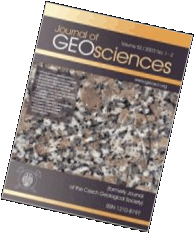Original Paper
Two-mica and biotite granites in the Weitra-Nové Hrady area, Austria - Czech Republic
Journal of the Czech Geological Society, volume 51 (2006), issue 3-4, 217 - 230
DOI: http://doi.org/10.3190/JCGS.995
The South Bohemian Pluton consists, in traditional view, of three major granite suites - the Weinsberg, Eisgarn, and Freistadt suites. In reality, the composition of the pluton is even more complicated than this subdivision would suggest. For instance, in the area among towns of Weitra, Freistadt and Nové Hrady, besides the clearly defined Weinsberg granite, four additional granite types have been distinguished on the basis of their field relations, petrology, whole-rock and isotope geochemistry: (1) medium-grained, locally porphyritic peraluminous two-mica Žofín granite, 324 ± 14 Ma old with initial Sr isotopic ratios (87Sr/86Sri) of 0.712; (2) peraluminous fractionated suite of coarse-grained two-mica Mandelstein granite, accompanied by muscovite Nakolice-Pyhrabruck and Šejby granites with 87Sr/86Sri ∼ 0.706; (3) chemically primitive Karlstift biotite granite with high magnetic susceptibility and 87Sr/86Sri = 0.706; (4) Weitra biotite granite with a magnetic and a non-magnetic varieties followed by dykes of muscovite granite (87Sr/86Sri ∼ 0.705). The evolution of the peraluminous granites towards lower Sr initial ratios may indicate change in the magma sources at the end of the Variscan magmatic cycle and a shift to deeper, more metaigneous material.
Webdesign inspired by aTeo. Hosted at the server of the Institute of Petrology and Structural Geology, Charles University, Prague.
ISSN: 1803-1943 (online), 1802-6222 (print)
email: jgeosci(at)jgeosci.org


IF (WoS, 2024): 1.3
5 YEAR IF (WoS, 2024): 1.4
Policy: Open Access
ISSN: 1802-6222
E-ISSN: 1803-1943
 Export to Mendeley
Export to Mendeley